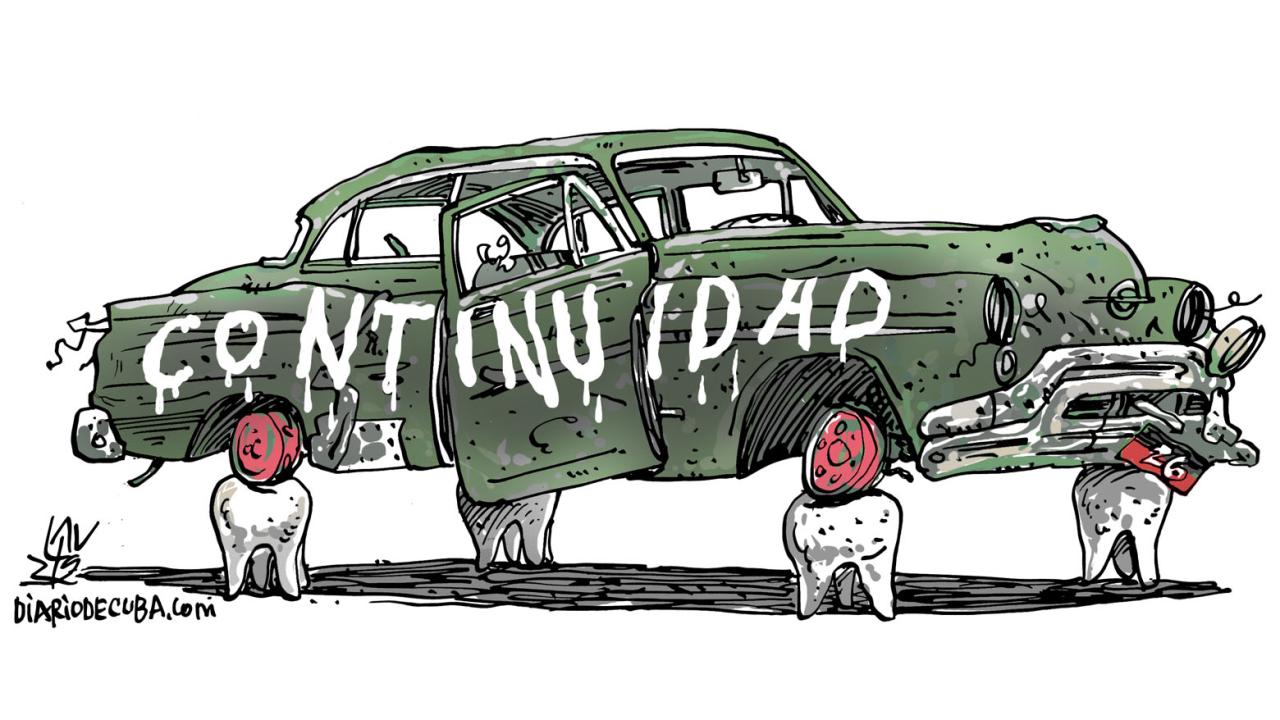The migratory pressure in the heart of every Cuban family is enormous due to the severe economic crisis in the country and the lack of hope for improvement within the current system. The official insistence on a policy of "continuity" and the suppression of civic demands for democratic changes and freedoms make migration the only way out for thousands of citizens. But leaving Cuba for the United States, the main destination, is very expensive, such that, in this case too, some are "privileged" while others will never have the chance.
"I want to leave, my children are desperate to leave, my friends, my neighbors, my co-workers, everyone. In truth, those who are leaving are just a small fraction of those of us who want to leave," says Alejandro, a construction worker.
"Three years ago it was just a few, but now it's everyone. What happens is that not everyone can, or has someone from outside to lend them the money to pay for the trip. That's why we're still here, exhausted and 'resisting,' as Díaz-Canel says. Of course, they are resisting living the good life, while we are without electricity and struggling to survive," he adds.
According to accounts from Cubans who have made the Nicaragua-Mexico-US crossing, without a coyote (human smuggler) the trip can cost between $5,000 and $6,000, but it takes a month or much longer. With a coyote, it is around $10,000, but in the first half of the year it cost up to $15,000 ? a fortune in a country where the average salary is the equivalent of just $20.
Dania, self-employed, is also desperate to emigrate, but her house is the only asset she can sell to pay for the trip, and she has been unable to legalize it. "I bought it when it was not legal to buy and sell homes. They made it a leasehold of the State, paying rent for 20 years and, finally, since before the Covid-19 pandemic, it has been possible to legalize it, but that is stalled for now. I can't wait for the day when I'll be able to sell it to get out of this country."
Raúl, another Holguin resident, is 24 years old and is dying to leave, but he has "neither his own house nor a car to sell."
"I don't have a family member outside to help me either. The ones who are leaving are those who were better off, who had American cars or trucks to rent out, or good houses to sell and leave. The people who are really working are still here and won?t be able to escape, even working ten times more than now," he lamented.
"I'm in that situation. I don't receive remittances, nor do I have any property to sell, nor can I find anyone to lend me the money. Those I have seen, Cubans who are well off in the United States, and invest in this business, prefer to take their chances with young women who go for el tubo (pole-dancing mixed with prostitution), because that way they make the money in less than three months, while in other jobs you spend more than a year paying it back, and that's why they rule you out you. I'm screwed," he said with regret.
A small survey conducted in the municipality of Mayari among 200 people of different age groups, showed that 158 (79%) wished to emigrate and dare to do so; 14 (7%) would like to, but are afraid of getting into debt or the risks; while only 28 (14%) said they were not interested. Eight (4%) said that they have the resources to do so; another 27 (13.5%) do not have the resources, but are working on it. In total, according to the answers collected, 86% wish to emigrate, 14% do not, only 4% have the resources to do so, and 13.5% are trying to save up.
In the end, although the vast majority of Cubans believe that emigration is the best way out, mathematically only a small percentage will be able to do so. From a human and social point of view, it is a veritable tragedy, an unprecedented figure as a migratory wave, equivalent to more than half of the population of a province.
According to U.S. Customs and Border Protection (CBP), between October 2021 and September 2022, 224,607 Cubans arrived in U.S. territory. This is more than half the population of Mayabeque (383,145) or Cienfuegos (404,550) and 2.7 times the population of Isla de la Juventud, and to this figure should be added the number of Cubans who have emigrated to other countries.
The fact that, from a social point of view, those who emigrate are mainly people with the most resources, or possibilities of obtaining them, means that those who remain in Cuba with no way out only have the option of pressuring the regime in the streets, on social media, and in all other public scenarios, to get it to give way to the change that the country needs.
Only this social pressure can succeed in sweeping away the Communist Party government's blockade against a better Cuba, and that long-suffering people who languish under impoverished conditions, and cannot emigrate, is the driving force behind it.

El título ha sido traducido mal. Debe decir "The people who are really having a hard time..." en vez de lo que equivale a "La gente que está verdaderamente trabajando..."